
[315] Silene dioica, Red Campion
Silene latifolia, White Campion
Silene vulgaris, Bladder Campion
Introduction
There are about 900 species of Silene, many of which can be found in Britain. The three most common species seen as wildflowers are Silene dioica, Red Campion; Silene latifolia, White Campion; and Silene vulgaris, Bladder Campion.
Silene dioica is also known as Red Catchfly. Somewhat confusingly, Silene latifolia is called Bladder Campion in the USA. Silene vulgaris is also called Maidenstears (or Maiden’s Tears.)
Other species in the genus Silene may be known as Catchfly or Campion.
Note also that Sideridis ruvularis is a moth known as a Campion, and Campion is a genus of Lacewings.
Taxonomy
Kingdom – Plants
Division – Vascular Plants
Class – Angiosperms (Flowering Plants)
Order – Caryophyllales
Family – Caryophyllaceae
Genus – Silene
Scientific Names – See text
Name
Campion, from Middle English, is cognate with champion. Silene coronaria, Rose Campion was used historically in garlands to crown victors. Catchfly comes from their sticky stems.
The use of ‘red’ is interesting. If you see a Red Campion beside a Poppy, you would not call it red. It can be various shades of purple or pink.
Silene is a feminized form of Silenus, a figure in Greek mythology who accompanied Dionysus, the god of wine. He is a man of the forest and his name comes from Greek seio-lenos, shaking-wine, a reference to drunken behaviour.
For dioica, see [353] Nettle. (You will have to wait. These posts have not been written in order.) Lati-folia means broad-leaved and vulgaris means common. With so many species of Silene, it won’t surprise you that many of them are dioecious, many are broad-leaved and in many locations Bladder Campion is not the most common.
Description
I was surprised to find that over fifty species of Silene can be found in Britain. These three are fairly similar in appearance.
I am going to have to tell you about dioecious plants. Many plants have separate male and female flowers but for dioecious plants these are on separate plants. Each Red Campion plant is either male or female. Unusually for plants, with Red Campion the sex is determined in the same way as humans and many other animals. There is a pair of sex chromosomes, where females are XX and males are XY. They split and recombine so the male parent determines the sex of the offspring.
The flowers are very distinctive with five deeply notched petals (looking almost like ten petals,) open and flat but turning at their base into a deep urn-shaped calyx.
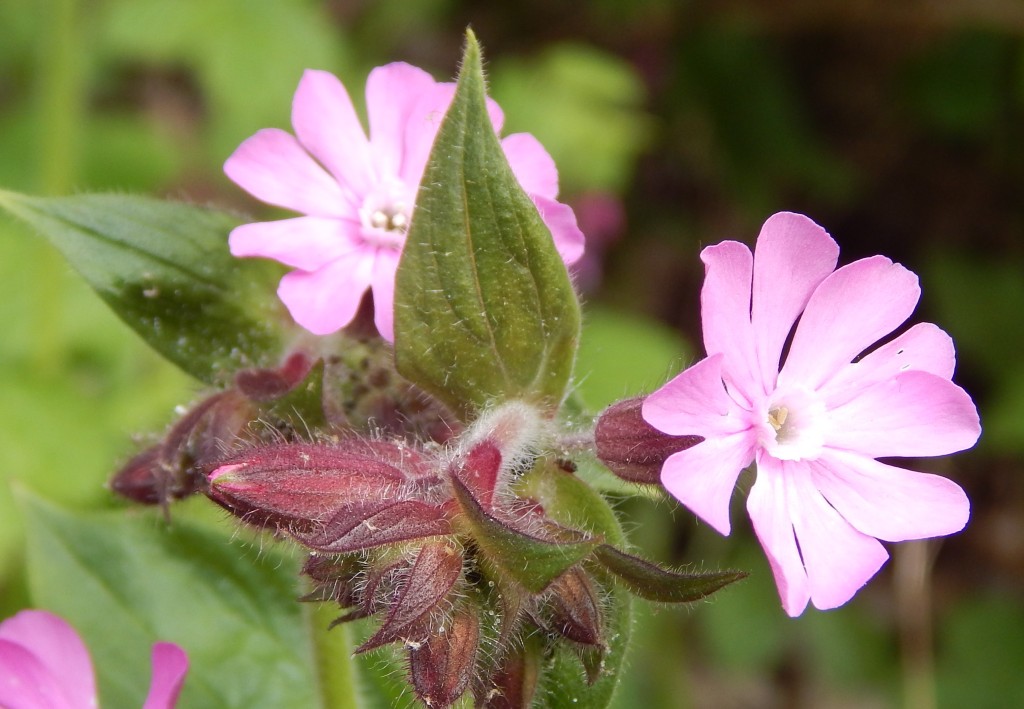
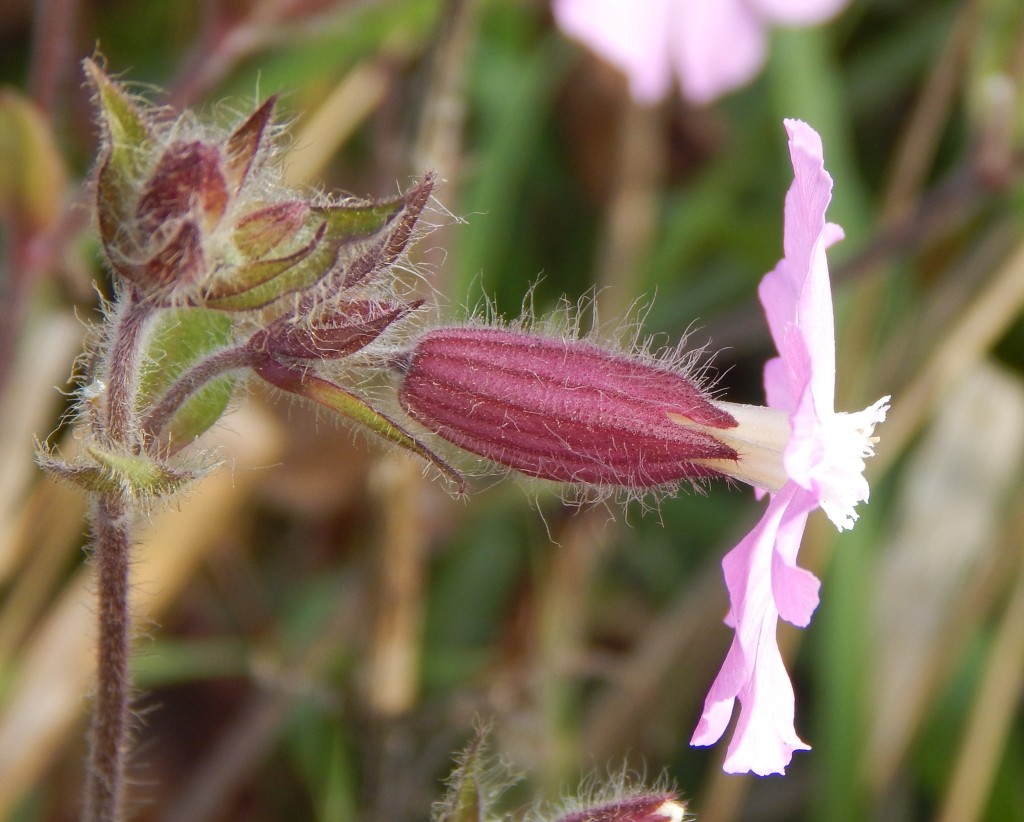
Male and female flowers are superficially similar. Those on the male plants have ten stamens and there are usually ten veins on calyx. Female flowers have five longer styles and usually twenty veins round the calyx.

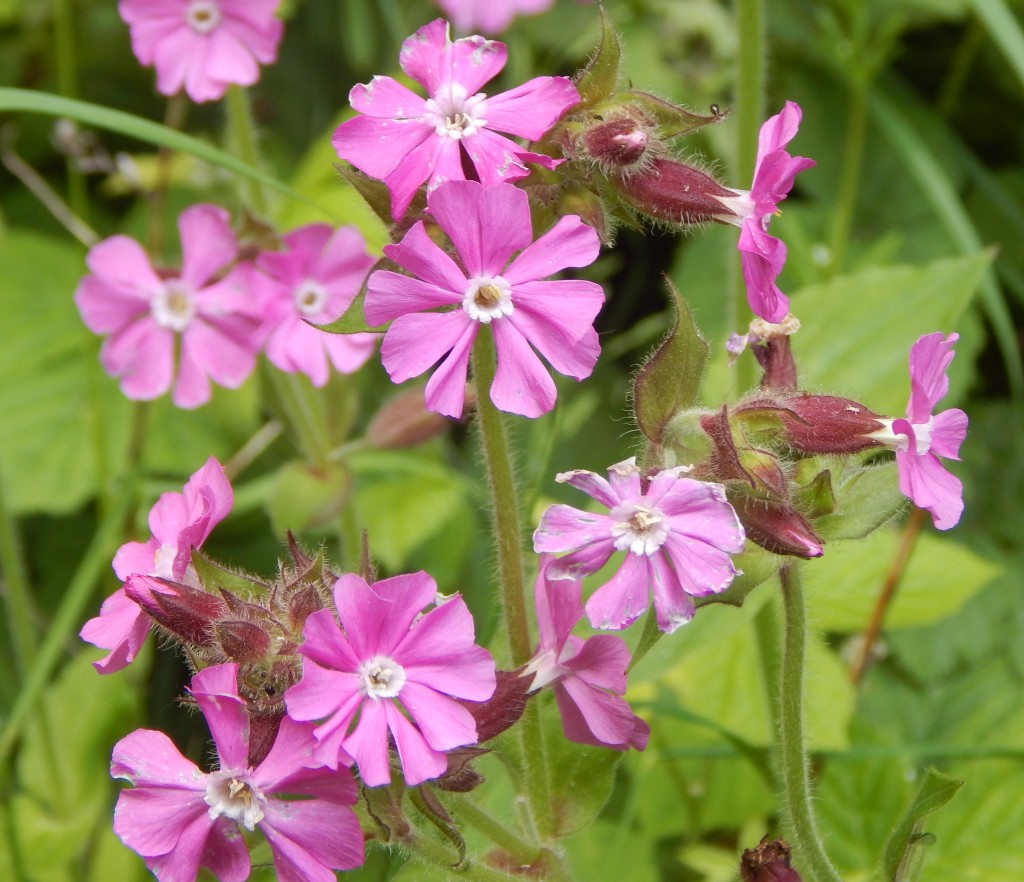



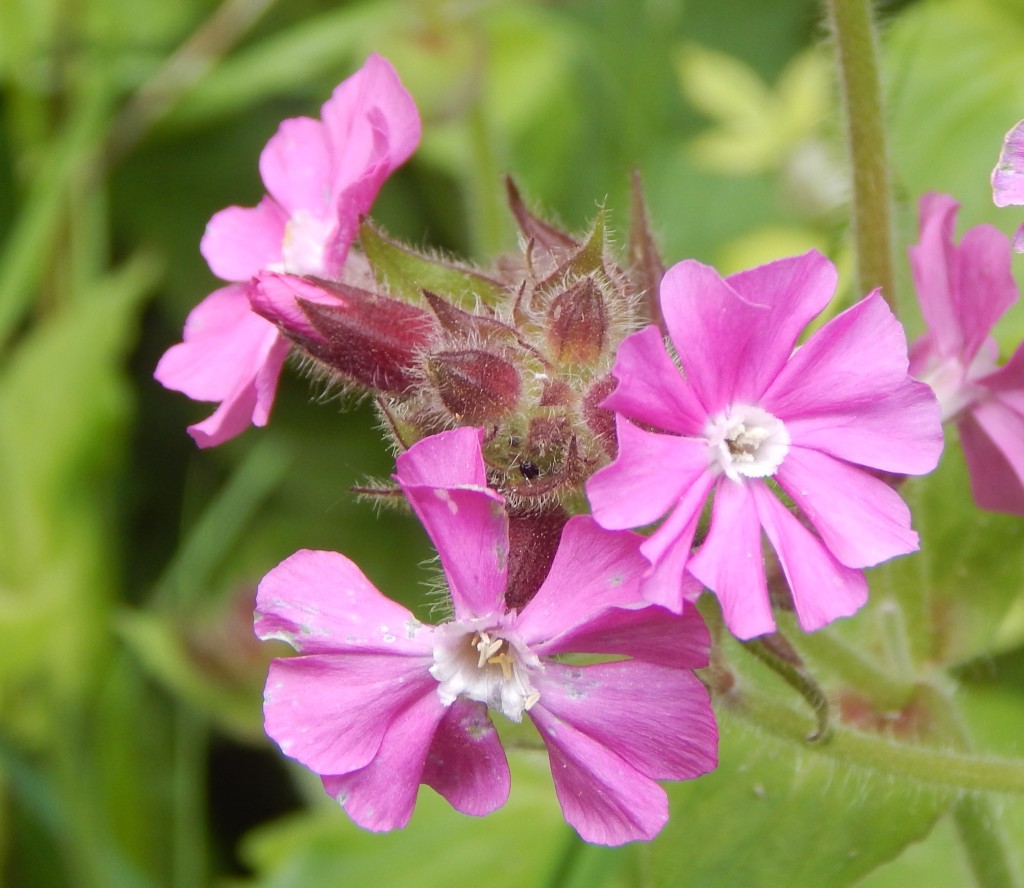
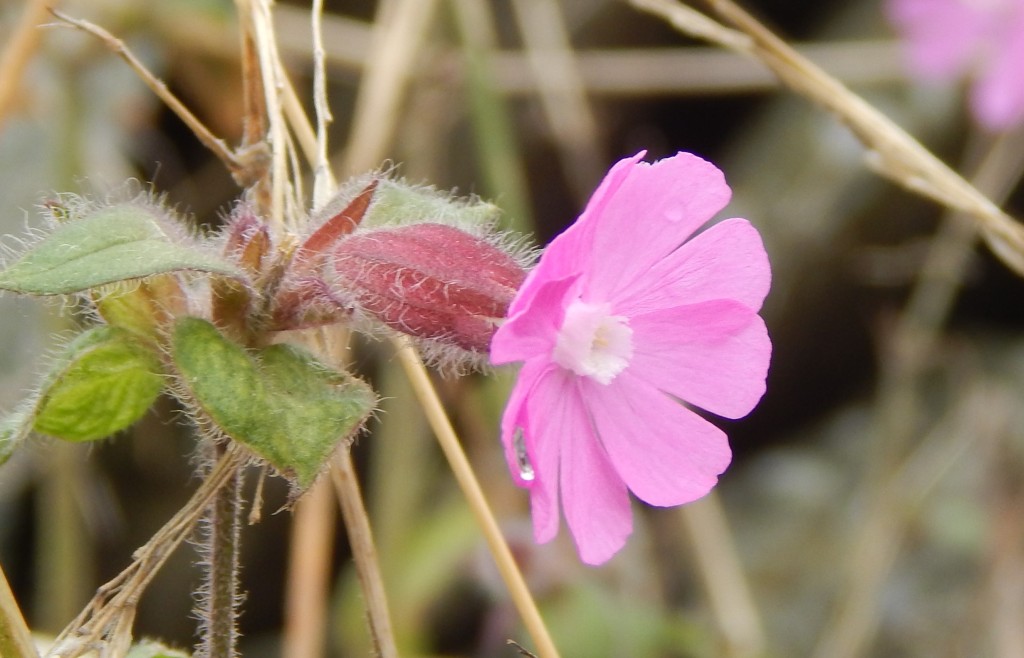
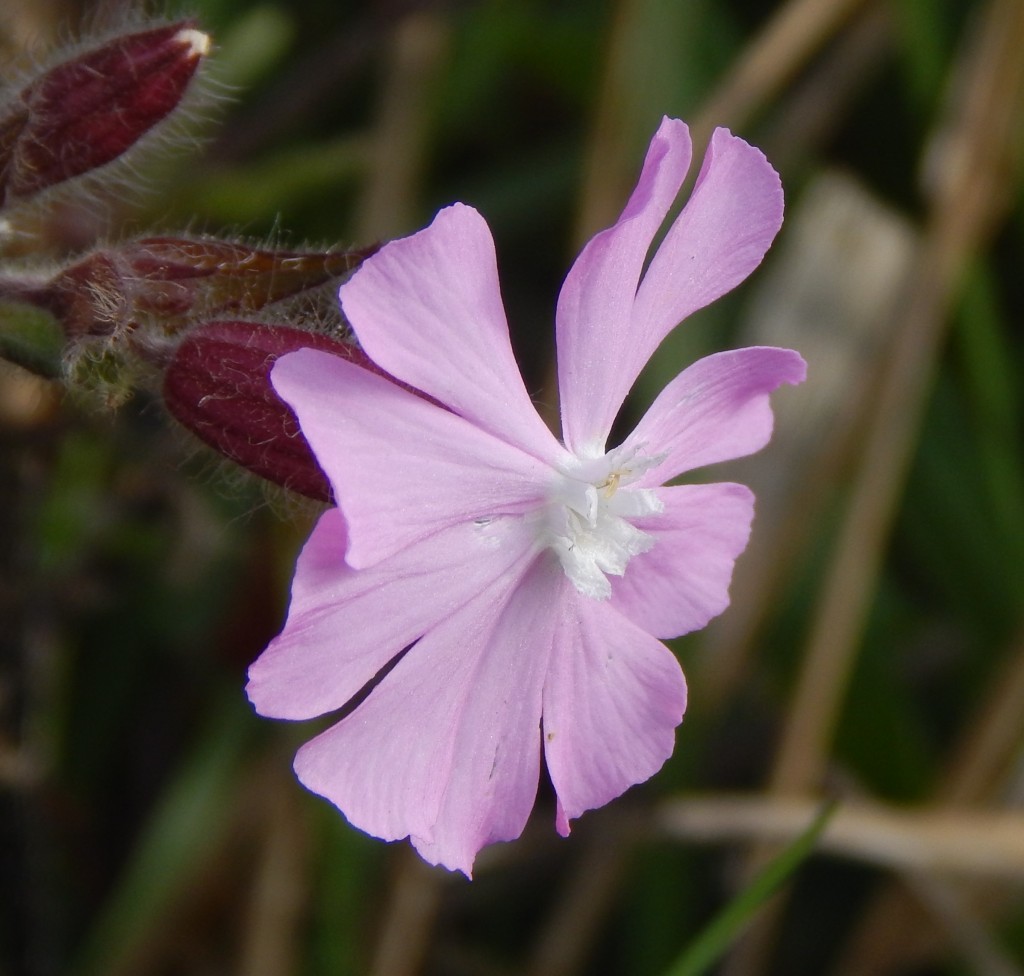
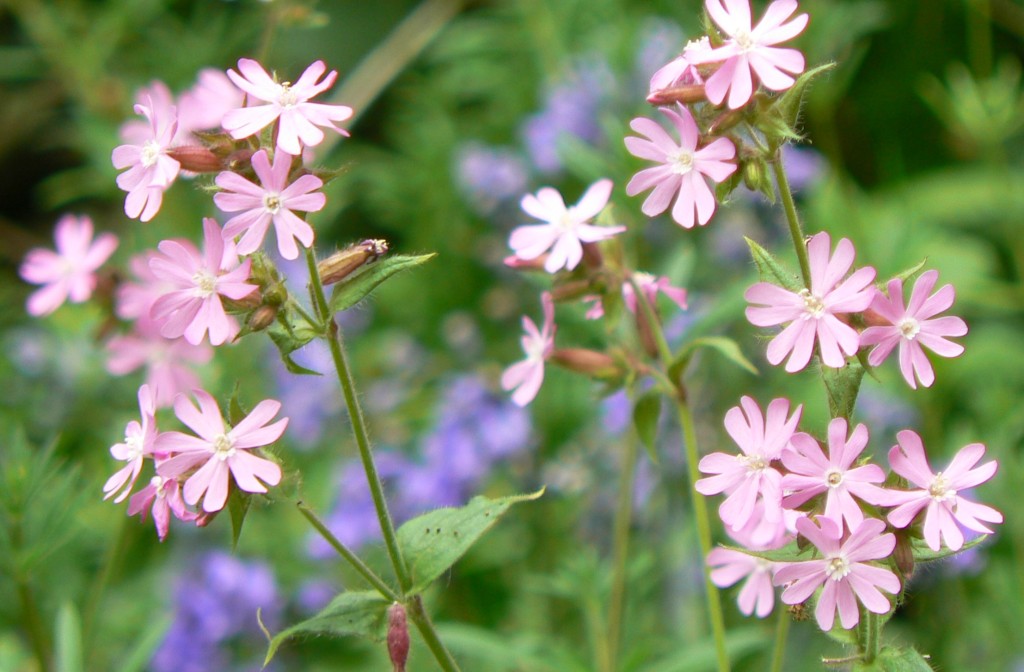
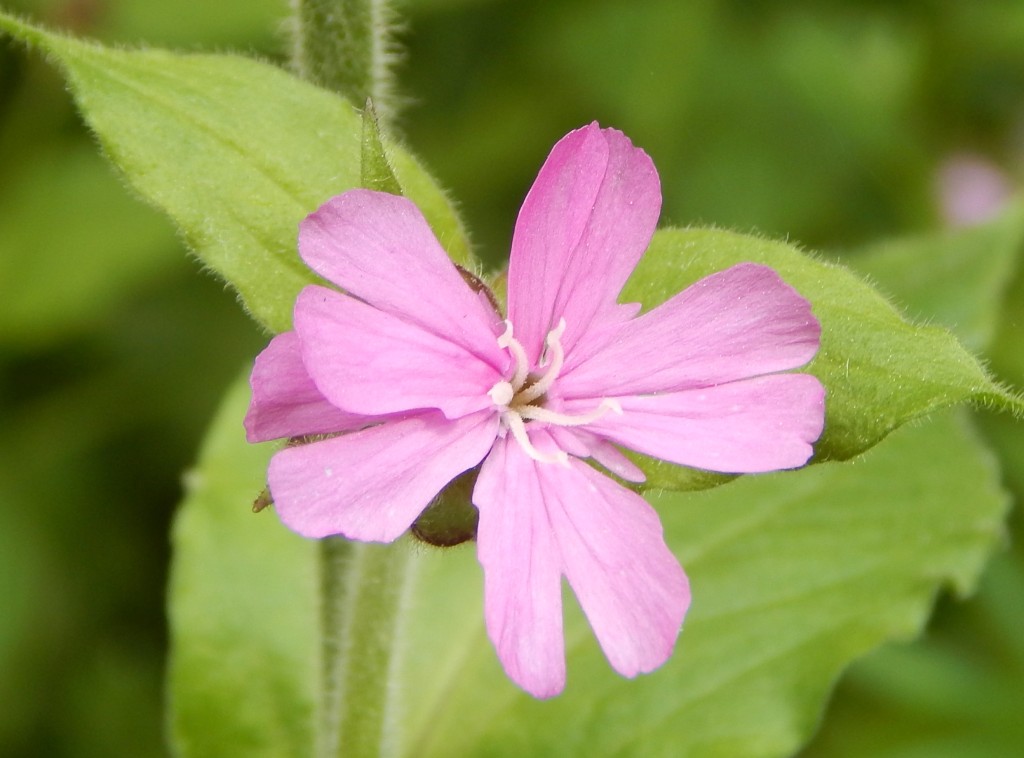
I think the last picture is female and all the others are male.
The flowers of Silene latifolia, which is also dioecious, are similar to Red Campion but white.


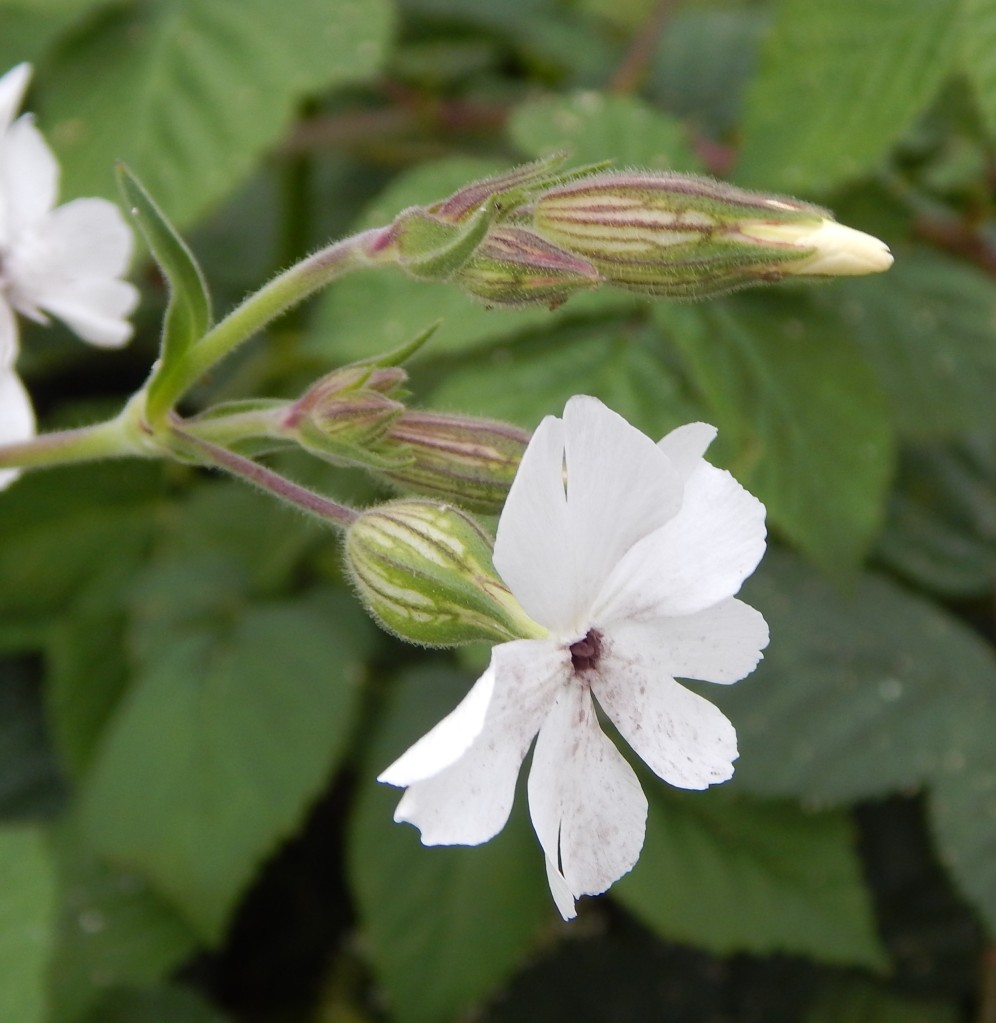
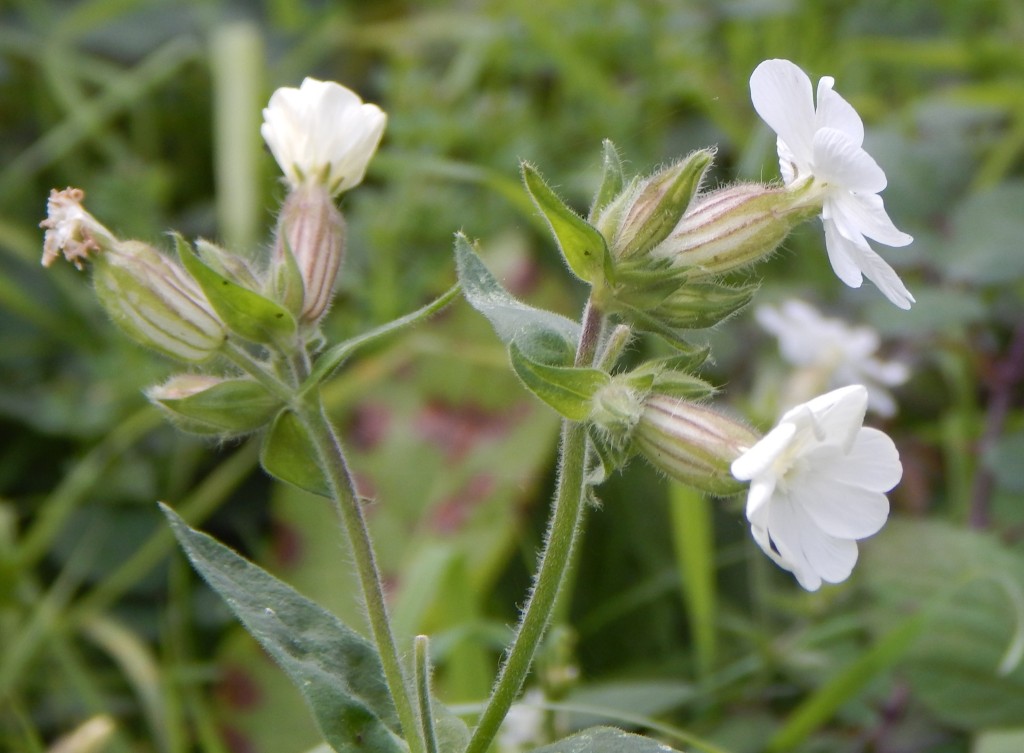
Silene vulgaris has petals like White Campion but the calyx is inflated to an almost circular form, either white or light purple or pink.
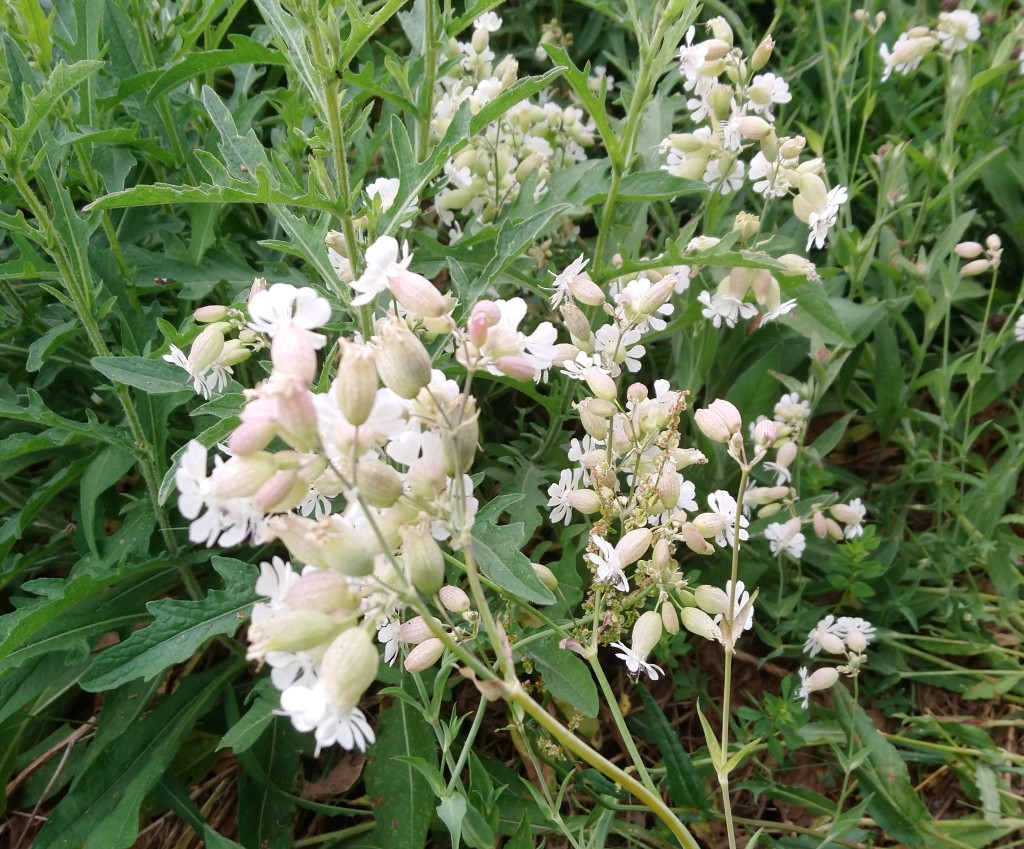
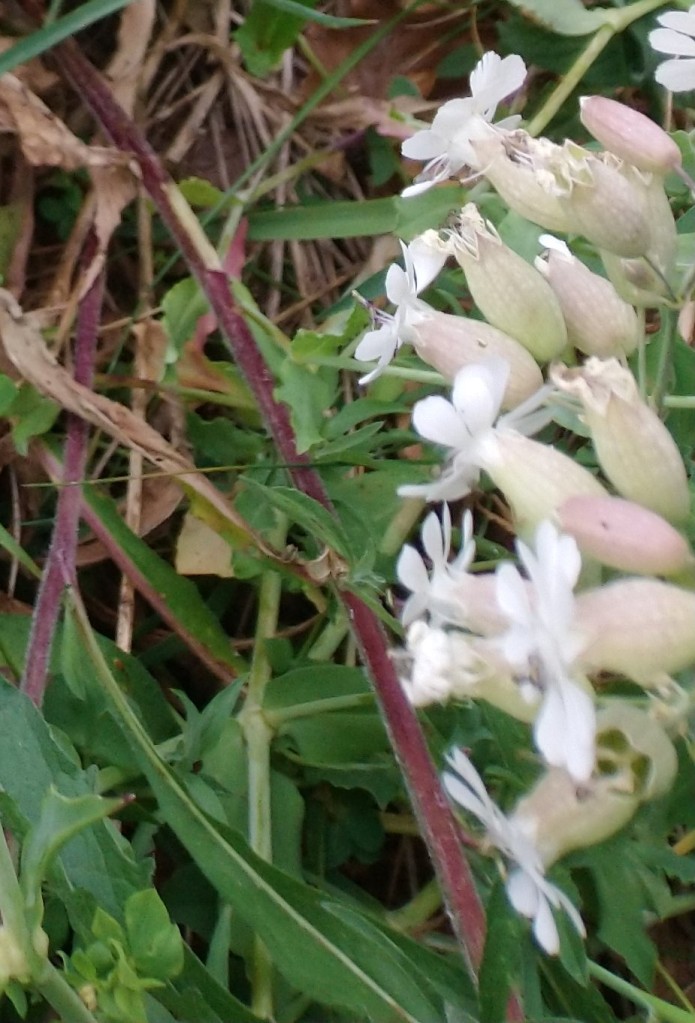
Habitat
Red Campion us found through northern and central Europe and is very common through Britain.
White Campion is found over most of Europe, western Asia and northern Africa. It has also naturalized over most of the USA. In Britain it is widespread but much less common than Red Campion.
Bladder Campion is widespread across Europe and also North America. In many parts of Europe its shoots and leaves are eaten as green vegetables. In the UK it is less common than the other two species above, and is mostly found in the south.
Other Notes
Apparently Silene latifolia and Silene dioica hybridize easily and the resultant hybrid Silene x hampeana is fertile and very common. Apart from being a pinker shade of red, the hybrid is virtually identical to Silene dioica – so perhaps some of my pictures are the hybrid variety. To further add to the confusion, Red Campion sometimes has an albino variety described as whiter than White Campion!
